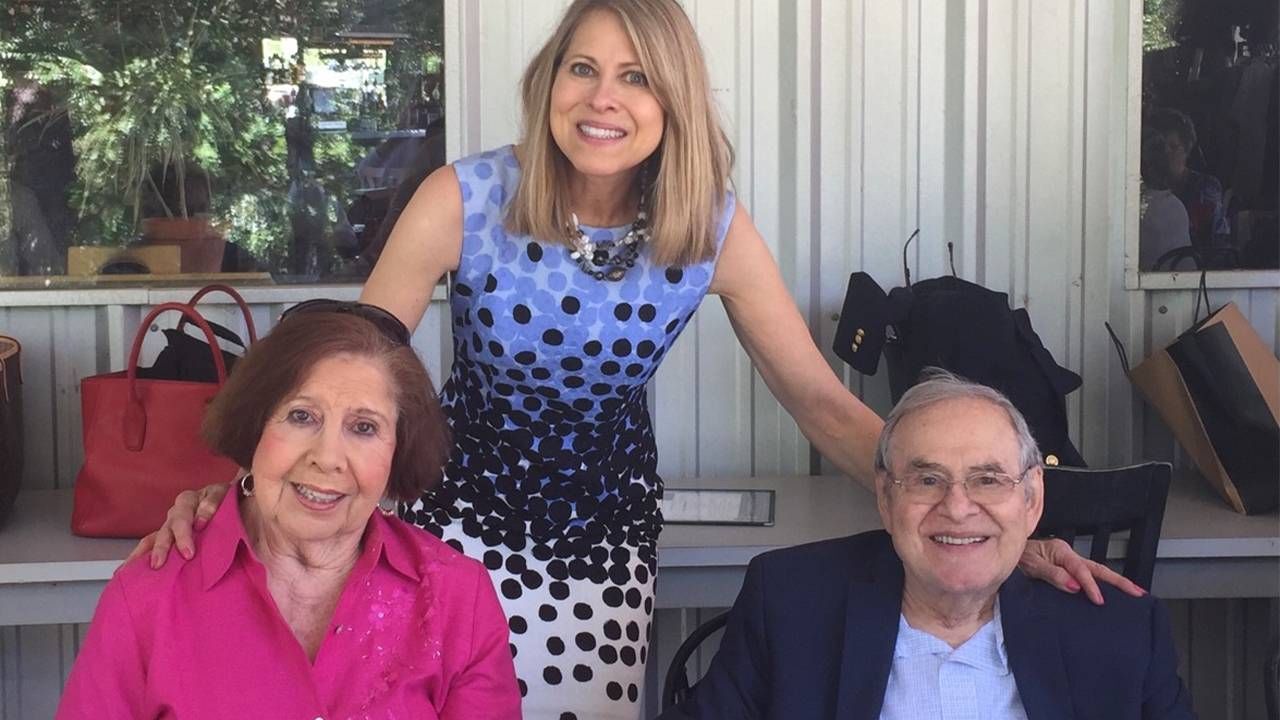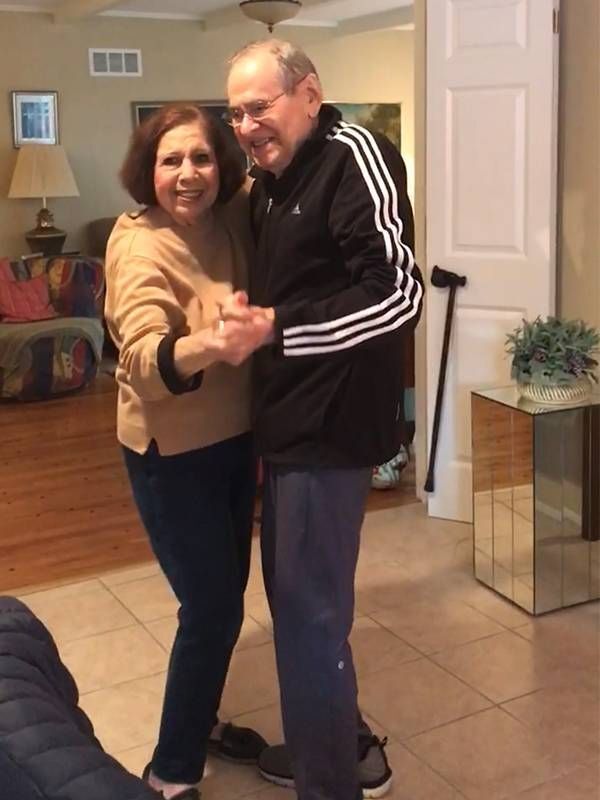
By Lisa Kanarek for Next Avenue
On a sunny afternoon a couple of years ago, I returned to my childhood home and walked in on a dance party. My 93-year old dad, his elbows tucked in, swayed to the music. My mom took two steps to the left, two to the right, then wiggled her hips to “Crazy Little Thing Called Love.”
The next song, a slow ballad, floated from the speakers of their wooden record player. My dad pulled my mom in close. With his hands on her trim waist and her arms resting on his solid shoulders, the pair glided around the tiled game room like lovestruck teenagers at prom.
My dad’s trips to the YMCA for cardio and weight training kept him agile. My mom’s tennis partners, two almost 20 years younger, inspired her to return tough serves and win challenging matches.
Friends and strangers alike assumed they were a decade younger than their actual ages, but as my parents moved on their makeshift dance floor with ease, I couldn’t ignore their slower pace. With both in their 90s, I didn’t have the luxury of taking the time I spent with them for granted.
A Brief Period of Rebellion
Almost 30 years ago, my then-husband and I moved more than 450 miles away from my hometown. After my children were born, we saw my parents almost every month. As my children grew into teenagers and their grandparents thrived as empty nesters, our mutual visits slowed to less than a handful a year. Phone calls and FaceTime replaced flights and family dinners.
My husband and I divorced nearly 20 years after relocating. Over a year later, I reconnected with Perry, a friend from high school who still lived in my hometown. We began a long-distance relationship and when I flew to town, I didn’t visit my parents. The sole reason for my short weekend trips was to see my crush.
One Monday morning, my mom called to confirm what my sister-in-law had told her.
“Were you in town last weekend?” she asked.
“Yes, for a few days.”
“Why didn’t you come over?” she asked, her voice louder than usual. “Your father wanted to see you.”

I finished the call, slipped on my running shoes, and rushed past my neighbors’ homes. Instead of feeling ashamed, I felt angry.
Throughout my childhood, I was the rule follower; the middle child who didn’t question the boundaries my parents set. As an adult, I resented the pressure to visit my parents when the person I wanted to see was Perry.
The next morning, I mentioned my conversation with my mom to my son, Kyle, confident he would take my side. His reaction illuminated what should have been clear to me.
“Wouldn’t you feel bad if I came in town and didn’t call or visit you?” he asked.
“That’s different,” I told him.
“Why?” he asked. “They’re your parents.”
For once, I didn’t know how to respond. I recognized that I was rebelling against my parents’ expectation of visiting them, while at the same time failing to put myself in their place.
A week later, within hours of landing, I drove to my parents’ house. With each visit, my animosity melted and rather than view subsequent visits to their home as a chore or an obligation, I looked forward to our time together.
The Beginning of My Dad’s Decline
Less than six months after my parents slow-danced in the paneled family room, my dad collapsed at the top of the stairs. In an instant, his reliable, gym-worthy legs turned to Jell-O. Soon after gaining mobility, his once-steady gait transformed into a soft shuffle.
No more multiple trips to the YMCA. No more steps without a walker. No more dance parties.
Although he couldn’t visit the gym, my dad was eager to maintain a consistent workout with the 10- and 15-pound weights he lifted with ease for years. He added a stationary bike to his makeshift home gym. After awakening with an aggravated knee injury, he spent a week at a physical rehab facility.
When he returned home, my dad traded cycling sessions for trips around the gameroom table. “Stay inside the box,” I said, when he pushed his walker too far ahead of him. Within a week, he quickened his pace and stood taller with each lap.
On clear days, I walked beside him as the driveway transformed into a smooth walking path. His daily walkabouts helped to build his spirits, but not his strength.
When he decreased his number of daily laps, I increased my number of hometown visits to almost every week. No more than a day after I left town, he would ask me when I was coming back.
Memories of My Dad’s Love for Dancing
Last year, a few days before Halloween, my dad died peacefully in his sleep at home, my mom at his bedside.
During the last few months of his life, and especially his last three weeks, I felt as if I was back in college cramming for a test. But this time, I was studying my dad, memorizing the small creases in the corner of his eyes, the cleft in his chin and his broad smile.
One morning after he died, I awakened from a dream where I embraced my dad, appearing the way he did in his 60s, tall with his hair slicked back and his gait strong and steady. I wanted the dream to last longer, but took solace in knowing that while he was alive, I soaked up every moment we spent together.
I’ve yet to dream about my dad again, but the memories we created are a salve for my sorrow.
One of my favorite memories is from a month before he died.
I walked into the family room and my dad pulled himself out of his favorite leather chair. He steadied himself on his walker, took a few steps toward my mom, then stopped.
“Keep going,” my mom said. He didn’t move.
“Are you okay, Dad?” I asked, checking to make sure his walker wasn’t caught on the transition strip between the two rooms.
My mom popped her hip to the side, tucked her elbows in and moved to the left, then to the right.
My dad smiled at his bride as she shimmied to the sound blaring from the TV, as though it were a samba, not CNBC. She turned and danced her way into the gameroom, like the Pied Piper.
“Okay, let’s go,” he said.
I think he was wiggling his hips.
Lisa Kanarek is a freelance writer. She has written for The New York Times, The Washington Post, Huffington Post, Wired, Reader’s Digest, and CNBC.
